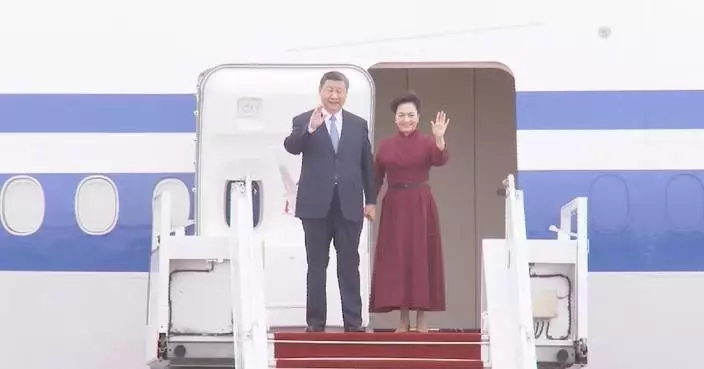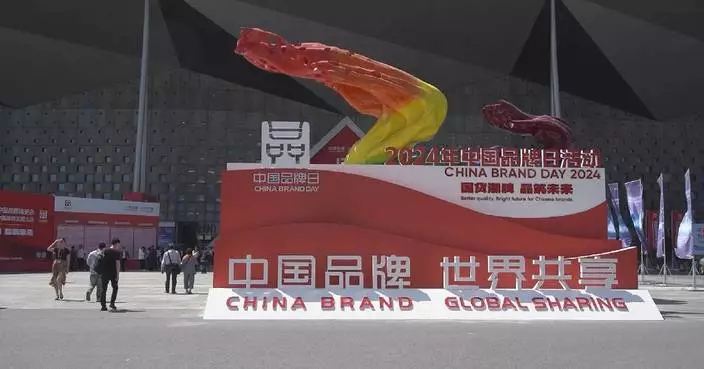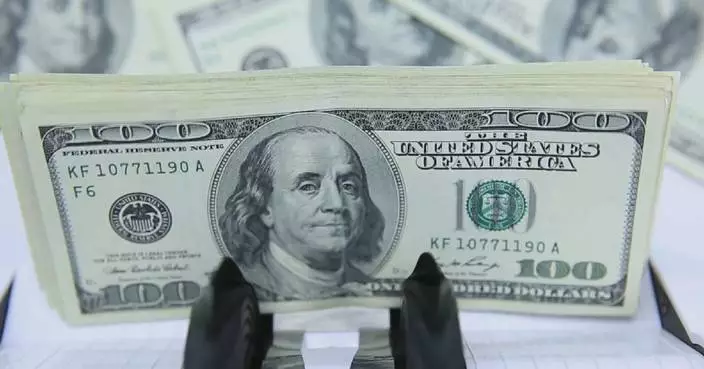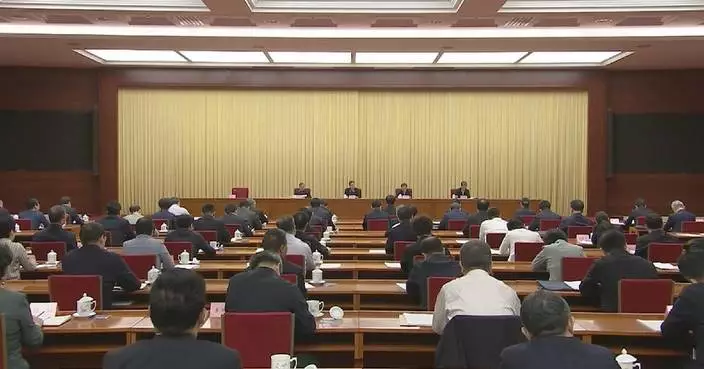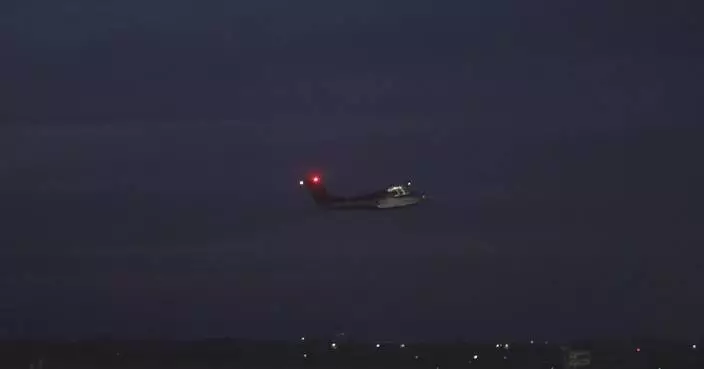Nearly 18 million people in war-torn Sudan, or approximately 40 percent of the country's population, are currently facing severe food insecurity, and the unprecedented famine may sweep across the entire country without urgent intervention, said a senior official from the UN Food and Agriculture Organization (FAO) recently in Port Sudan.
The conflict in Sudan has been ongoing for over a year, with 11 out of the country's 18 states engulfed in warfare. Agricultural infrastructure has been severely damaged, leading to a significant reduction in arable land.
In addition, a large number of people have been displaced, and agricultural inputs such as seeds and pesticides have seen substantial price increases. As a result, agricultural production has been severely affected.
According to data from the FAO, Sudan's grain production, including wheat, decreased by 46 percent compared to the previous year of 2023. This has led to a 60 percent increase in overall food prices in the country last year, with further increases of 50 to 100 percent expected this year.
According to the Integrated Food Security Phase Classification (IPC) by the United Nations, nearly 18 million people in Sudan are currently facing severe food insecurity, with approximately 5 million people in even more dire food emergency conditions, just one step away from famine.
Less than 5 percent of the population nationwide have access to a full meal every day. A United Nations report has stated that Sudan is facing the world's largest hunger crisis.
The FAO said that in the face of such a severe crisis, providing food and financial assistance alone to Sudan is not enough to compensate for the shortfall in local food production. It is also necessary to implement various agricultural intervention measures, such as providing high-quality seeds to help local farmers resume production and offering vaccine support for livestock survival. These measures are essential to help Sudan overcome this large-scale humanitarian crisis.
"We, as FAO, helped more than 5 million food insecure Sudanese across 15 states in 2023. This was through provision of different types of improved seeds, both for the summer and the winter season, supports a livestock," said Rein Paulsen, Director of the FAO Office of Emergencies and Resilience.
Currently, humanitarian aid agencies' operations in Sudan are still facing many challenges, including funding shortages and humanitarian access difficulties. The FAO is calling on the international community to provide Sudan with more attention and support.
"In terms of funding to be able to support the more than 10 million people who we are targeting in terms of support in 2024. We, as FAO, need more than 100 million U.S. dollars. Our budget is the request for 104 million U.S. dollars to do that work. So far we are funded at less than 10 percent," said the FAO official.
Since the armed conflict broke out between the Sudanese Armed Forces (SAF) and the paramilitary Rapid Support Forces (RSF) on April 15, 2023, regional and international powers have made mediation efforts to convince the warring parties to agree on a political path to ending the conflict. Yet, no significant success has been achieved.

War-torn Sudan facing food crisis, needs urgent aid: FAO official
Chinese and French scientists have created the world's most precise temperature measuring device in low-temperature meteorology through innovative partnership, which is expected to open new doors for fundamental science.
This year marks the 60th anniversary of the establishment of diplomatic ties between China and France, and for the past 40 years, technological cooperation between the two countries has achieved groundbreaking results.
Applications such as future quantum computers, superconducting maglev trains, and nuclear fusion providing limitless energy, all harness the wonders of the low-temperature realm. And precise measurements within this range have became the cornerstone of future science.
In the lesser-known field of international benchmark temperature measurement in extremely low-temperature areas, the Technical Institute of Physics and Chemistry of the Chinese Academy of Sciences (CAS) and the French Joint Metrology Laboratory (LNE-CNAM) carried out joint research through the construction of a joint laboratory in 2018. Remarkable efficiency marked their collaboration, achieving key results in just three years, a fraction of the initial ten-year estimate.
When temperature drops to unimaginable extremes, profound changes occur in the microscopic world, leaving scientists worldwide gradually approaching the limits of measurement.
For most people, temperature is just a feeling of hot and cold. But in the eyes of scientists, it has different meaning- it is a measure of the energy. When air is hot, the molecules move fast and they have high kinetic energy. The colder the molecules are, the smaller their velocities are and, subsequently, their energy. Temperature is simply a way to characterize the energy of a system.
Therefore, scientists cannot rely on Celsius or Fahrenheit scales of daily life, because the zero degree on those scales cannot correspond to zero velocity of the particles, or zero energy.
They use absolute temperature measured in Kelvin. Zero Kelvin, or minus 273 degrees Celsius is the lowest possible temperature in the universe.
Laurent Pitre, professor with LNE-CNAM, wishes to provide the world with accurate temperature measurements and to become the source for thermometers worldwide.
Over the past few centuries, scientists have relied on measuring the triple point of water as a physical reference to determine temperature. However, this tradition was disrupted in 2018.
"Before the overhaul of the International System of Units, all seven fundamental physical units were primarily defined based on physical objects. In extremely high and low-temperature ranges, due to the long chain of transfer, it was difficult to obtain highly accurate measurements of thermodynamic temperature. This overhaul bases the SI on natural constants, ensuring its long-term stability and universal applicability," said Gao Bo, senior engineer with CAS.
"I think it is a big change and for a country like China, it's opening a new new door [in science]," said Pitre.
New rules need new methods, and this saw China and France teaming up to come with more accurate ways of temperature measurements.
"This is the new method proposed and developed by a Sino-French team. It's currently the most accurate temperature measurement device globally, in the range of 5 to 24.5 K. The uncertainty in this range can reach 10 to the negative 4th power (0.0001 K), which is hundreds or thousands of times more accurate than thermometers used for measuring body temperature. So, how can we establish the most accurate ruler for measuring low temperatures based on new definitions and scales? This is the task we are undertaking. It provides a rare historic opportunity for low-temperature measurement," said Gao.
"So, how can we establish the most accurate ruler for measuring low temperatures based on new definitions and scales? This is the task we are undertaking. It provides a rare historic opportunity for low-temperature measurement," she said.
The joint team proposed a novel approach by emitting microwaves into gases at different temperatures and revealing temperature variations through changes in microwave frequency.
"We use a microwave resonance measurement system with a network analyzer at its core. It operates from room temperature to low temperatures. We sweep frequencies within the core cavity to measure the microwave resonance frequencies under vacuum and gas-filled conditions at constant pressure," said Gao.
"By comparing these resonance frequencies, which represent refractive indices, we establish mathematical relationships among refractive index, density, and thermodynamic temperature. Thus, measuring frequencies enables us to determine thermodynamic temperature at constant pressure," she said.
This method is concise and efficient, but it comes at the expense of exceptional skills in temperature and pressure control.
"The principle was jointly proposed by us. We have advantages in constructing low-temperature environments, while France has an advantage in pressure control," said Gao.
"I could have made my own equipment, but then I will have to optimize the equipment to make it okay. We are two instead of one, and this makes us again to have confidence in your measurements. A group is always better than singles," said Pitre.
Now the China-France collaboration has evolved into a global relay. The temperature data is stored in a compacted kit, circulating among labs worldwide. In this process, a new generation of International Temperature Scale is taking shape.

Chinese, French scientists collaborate to push boundaries of temperature measurement




